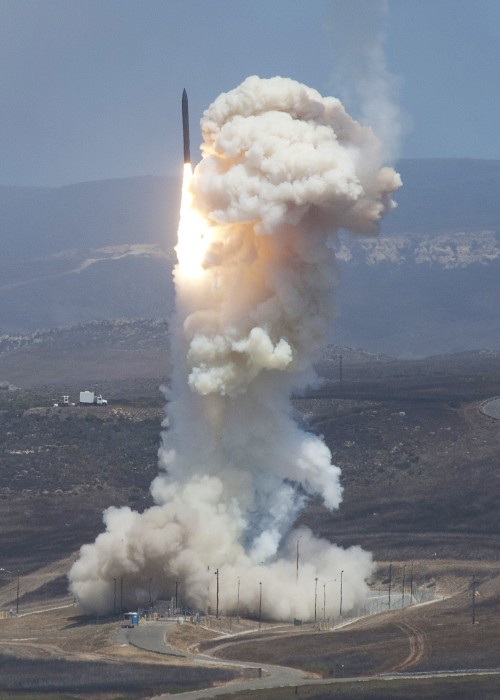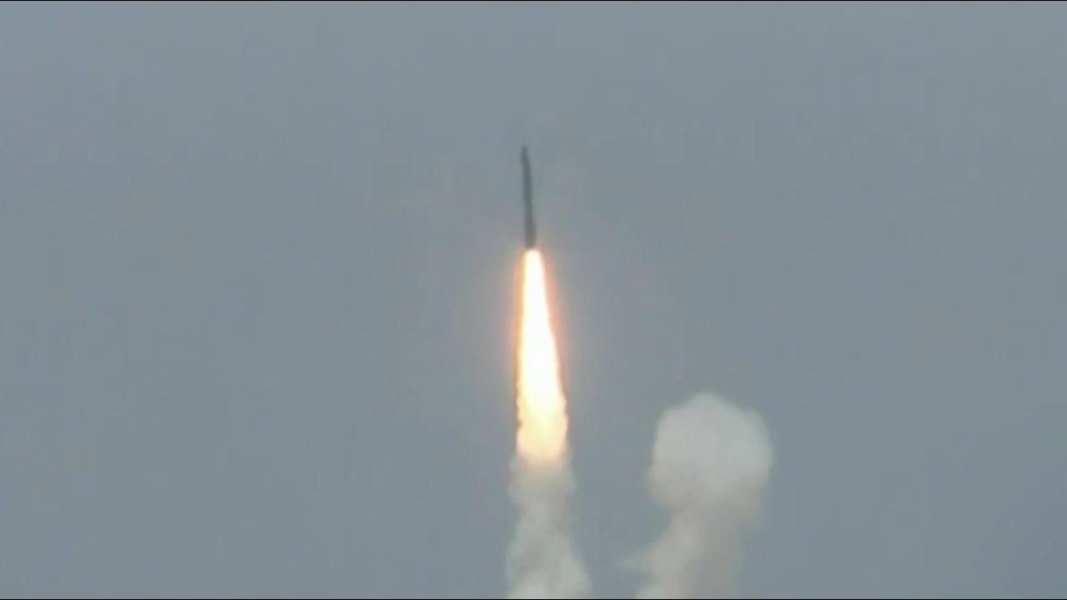U.S. Missile Defense
test Over Pacific Ocean
a Key Milestone
WASHINGTON — The Pentagon successfully tested a U.S.
long-range interceptor missile over the Pacific Ocean on
Tuesday in an exercise aimed at helping gauge American
readiness to counter a potential threat from North Korea.
During the test, the Pentagon's Missile Defense Agency
launched an interceptor rocket from an underground silo
at Vandenberg Air Force Base in California. The interceptor
hit and destroyed an intercontinental-range missile fired
from a test site on Kwajalein Atoll in the Pacific, the
Pentagon announced.
U.S. Missile Defense Agency Director Vice Adm. Jim
Syring called the test a "critical milestone" in a statement.
"This system is vitally important to the defense of our
homeland, and this test demonstrates that we have a
capable, credible deterrent against a very real threat.
I am incredibly proud of the warfighters who executed
this test and who operate this system every day," Syring said.
The U.S. military's test comes on the heels of North Korea's
reported launch of a military projectile Monday morning that
landed in Japan's maritime economic zone. It also comes
amid heightened tensions between the U.S. and Pyongyang
over North Korea's continued provocations under leader
Kim Jong Un.
North Korea has said it is working on an ICBM, which could
potentially hit the West Coast, and American officials are
concerned about the possibility the North Koreans could
miniaturize a warhead to put on an ICBM.
General John Hyten, the head of U.S. Strategic Command,
has said Pyongyang already has ICBM capability, but still
lacks a miniaturized warhead.
The $244 million test does not necessarily confirm that the
American military is capable of defending itself against an
intercontinental-range missile fired by North Korea.
Pyongyang also is understood to be moving closer to the
capability of putting a nuclear warhead on such a missile
and could have developed decoys sophisticated enough to
trick an interceptor into missing the real warhead.
President Donald Trump was briefed after a North Korean
missile test earlier this month and the White House said
in a statement at the time that "North Korea has been
a flagrant menace for far too long."
During a recent visit to South Korea, Secretary of State
Rex Tillerson said "the policy of strategic patience (with
North Korea) has ended," and he added that military
action could be on the table if North Korea elevates the
threat of its weapons programs.
Before Tuesday, the most recent intercept test, in June
2014, also was successful, but the longer track record
is spotty. Since the system was declared ready for
potential combat use in 2004, only four of nine intercept
attempts have been successful.

and missile programs are a defense against perceived U.S. military threats.
Laura Grego,
senior scientist
at the Union of
Concerned
Scientists, which
has criticized the
U.S. missile
defense program,
calls the interceptor
an "advanced
prototype,"
meaning it is not fully matured technologically even if it has
been deployed and theoretically available for combat since
2004.
The interceptors are, in essence, the last line of U.S. defense
against an attack by an intercontinental-range missile.
The Pentagon has other elements of missile defense that
have shown to be more reliable, although they are designed
to work against medium-range or shorter-range ballistic
missiles. These include the Patriot missile, which numerous
countries have purchased from the U.S., and the Terminal
High-Altitude Area Defense, or THAAD, which the U.S.
deployed this year to South Korea to defend against
medium-range missiles from North Korea.


No comments:
Post a Comment
Thanks for commenting. Your comments are needed for helping to improve the discussion.